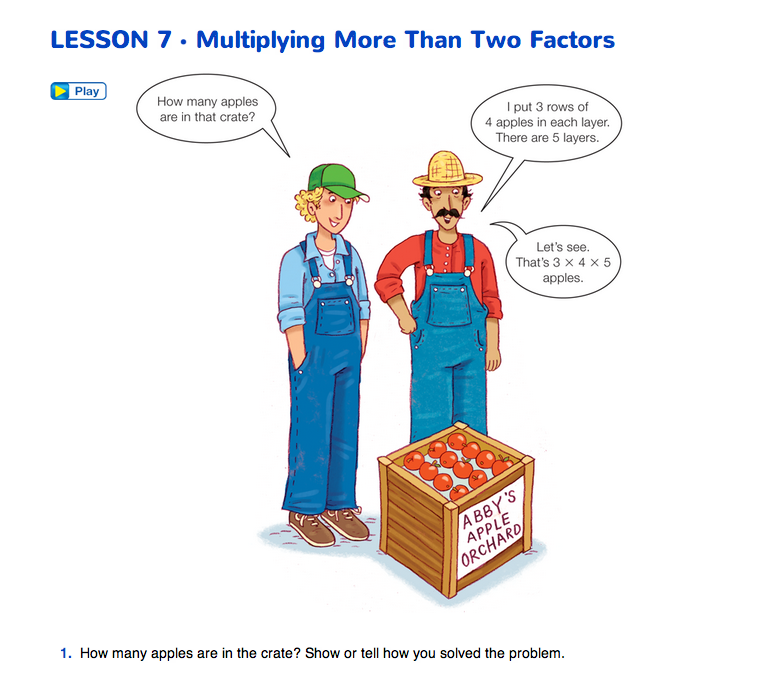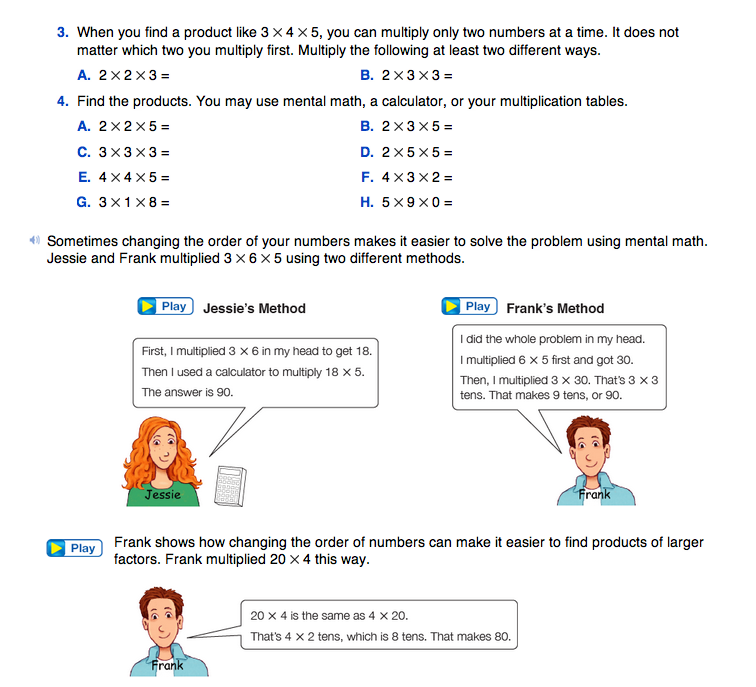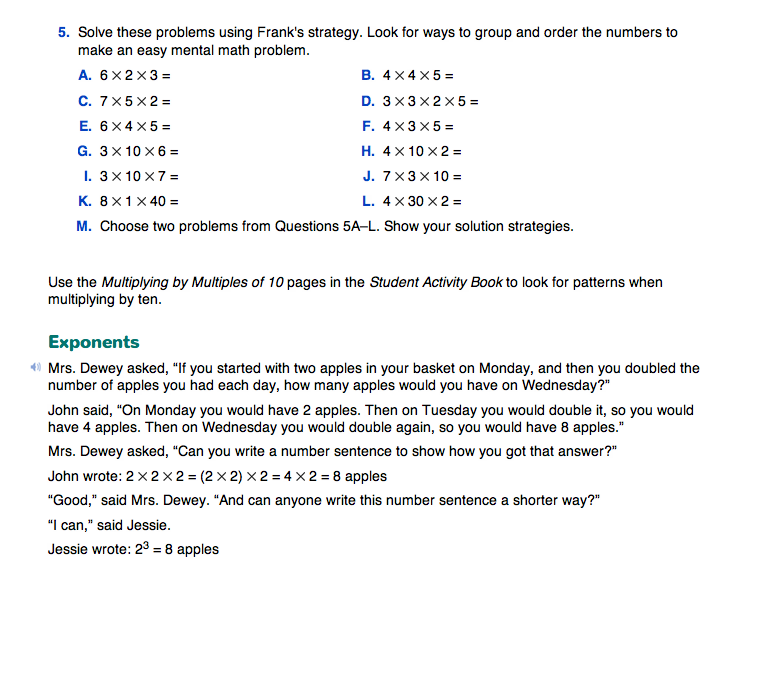Multiplying More Than Two Factors
Est. Class Sessions: 1Developing the Lesson
Part 1: Grouping Factors
Group and Order. Begin the lesson by discussing the example illustrated in the picture on the first Multiplying More Than Two Factors page in the Student Guide. There are 3 × 4 × 5 apples in a crate with 5 layers and 3 rows of 4 in each layer. Write the problem 3 × 4 × 5 on the board.
Students work with partners to answer Question 1 in the Student Guide.
After several minutes, ask:
After one group shows how they solved the problem, ask:
Have one or two more students share their methods. Remind students about the turn-around rule (commutative property) in which the order of numbers to be multiplied does not affect the answer. See Content Note in Lesson 1.
Ask:
Have students check the examples shown in the Grouping and Ordering section to see if they match the solutions they came up with as a class.
In small groups, ask students to discuss Question 2. After several minutes, ask them to share their group's responses with the whole class. This question introduces students to the associative property of multiplication. Students may refer to this property as the “grouping rule.” See Content Note.
Introduce the use of parentheses to “group” factors to show which ones to multiply together first. If students are more comfortable circling numbers, allow them to continue to do so. Use of parentheses will be discussed more formally in future units.
Point out to students that they can choose groupings to make calculations easier. For example, Arti's method of solving 3 × 4 × 5 as 3 × (4 × 5) may lead to an easier mental calculation than David's or Lin's method.
Ask students to answer Questions 3–4 with partners. After students have completed most or all of the problems, select two or three problems to discuss with the whole class. Have students share their reasoning.
In Question 4, students find products of 3 factors using mental math, calculators, or multiplication tables.
Read and discuss with the whole class Jessie's and Frank's solutions to the multiplication problems presented on the page. These examples show how the turn-around rule and grouping strategies can be used to find products using mental math. Frank's solutions also show how to use the turn-around rule to mentally multiply by numbers that are multiples of 10.
Question 5 asks students to find ways to group or reorder the factors to make the problem easier for solving with mental math. Different students will find different groupings easier. Ask students to explain how they used mental math to solve each problem and explain why they grouped the factors in the way they did. Have students compare their different strategies.

















